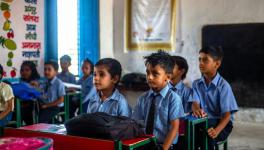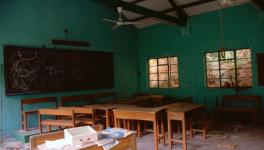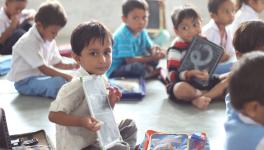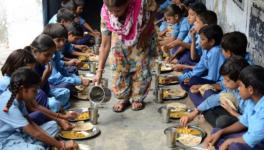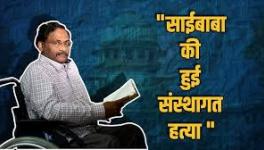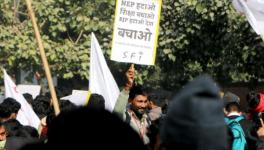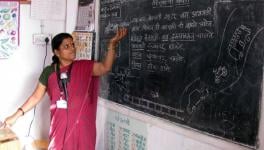A Matter of The Heart
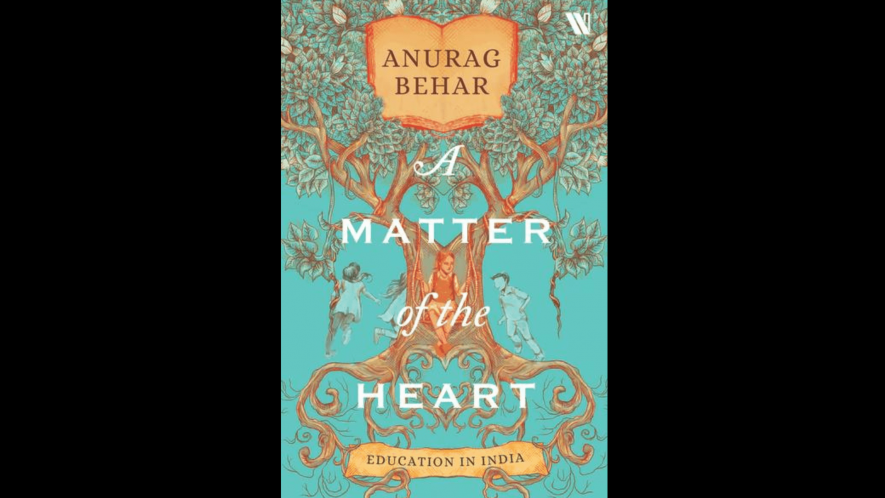
Image courtesy: Westland Books, 2023
Anurag Behar’s A Matter of The Heart is a book on the state of education in India beyond the main cities and an ode to educators who are shaping the future of our country.
In this collection of essays, the author takes us to schools in remote villages in India. He gives us an insight into where our nation stands on education and, through that lens, into the nation itself. He shows us an India that is waiting for better infrastructure and one where the right to education is in constant struggle with the need for survival. But what emerges is the heart-warming and life-affirming story of how people and communities, energised from within, are changing lives — of individuals and the nation. This book is testimony to the essence of education: ‘The heart of the matter is that it is a matter of the heart.’
The following are excerpts from the book.
Stranger in My Own Land
In the past five years, I have spent about 100 days each year in the field. These are places where we work, across districts in Uttarakhand, Rajasthan, Madhya Pradesh, Chhattisgarh, Telangana, Karnataka and Puducherry. I have been visiting these places for eight years, but it is in the last five that there has been a regular rhythm.
This rhythm covers forty-seven districts at least once a year. Our team members are in over 175 small towns. I try to but am not able to go to all these towns every year. Infrequently, I do travel to other parts of India and, more regularly, to Delhi and the US, all of which is in addition to my travelling in the field.
Everywhere in the field, I do the same things: spend time with our team, visit public (government) schools, talk to children, meet teachers individually and in groups, observe some workshops, chat with people from communities where the schools are located, meet people from other social sector organisations and, once in a while, government officials, and also pick up threads of conversations with drivers, dhabawalas and waiters, from where we left off the previous year. All this is not only in the district headquarters, which is usually the largest town around, but in villages and small towns spread across that district.
In many of these places, the dogs and I are familiar with each other. Wherever I am, I run in the mornings on the roads or paths. Every such running route has dogs. The aggressive and spiteful ones, I have identified. But, as I have learnt, most are just nice and friendly. If you slow down the pace or stop, their affection wags their tails.
These repeated visits develop bonds with the places, not just the dogs, nurturing acquaintances into relationships and regularly opening windows into life, which can happen only by chance for a one-time visitor. Clearly, this is one of the great privileges of my role, to be able to experience India with this intimacy.
A teacher brings dal–chawal–subzi from home for me at her school, in the searing heat of Mudgal. She had met me a year before and remembers that I can’t eat spicy food. Up, high in the mountains in Kumaon, plain dal–roti is ready for me in another school, along with the mid-day meal for children. They also remember my preference. Lakshmi’s children have grown in these years, while her small dhaba between Barkot and Uttarkashi at the Giloti bend acts like a home kitchen for me. And my colleagues, too, never forget.
I couldn’t function in this country of spice without the care that I get, often at the cost of much inconvenience to those who bestow this care on me. Most of them have no reason to care, other than that they just care without reason. The human substrate is deep in this country of spice.
How do you make a living when drought has started in January? How many days of wages can you skip to take your mother to the hospital which is 100 km away? What do you do with guards who won’t let you enter the forest to get firewood, court orders be damned? Questions like these seem unanswerable to me. But people live through these and more every day, and on very little, in all these places.
Never will I ever forget what the teacher from Dei told me, ‘Yahan to sab kuch chalne lagta hai [We make everything work here].’ She was talking about stubs of chalk. Too small to hold, but she uses them till they crumble between her thumb and finger. Everything has value here, never to be thrown away. Used in ways that are hard to imagine, till they can’t. Because everything is scarce. Though that is not a complaint heard, let alone a refrain. It is just another dimension of life. Every time I am back in this other India of mine, I spend each rupee even more carefully.
These are different worlds, that of my 100 days, and the rest—not separated worlds, but like the shores and the depths of the ocean. The depths of the ocean is most of India. Those who are on the shores know not of the depths, unless they make an effort. Many have come from those very depths, but have now cut themselves off, and exorcised their memories.
Most economic and political power resides in these shores, which I encounter frequently in the other 200 days. Too few of these purveyors of power—academics, administrators, policymakers, business people, journalists, professionals and more—make the effort to experience this vast and real India. But they offer opinions and, worse, take decisions that affect those whose lives they have no clue about. Politicians make more of an effort, since their trade depends on it.
We are strangers in our own land. Those who take the effort to discover this land may or may not help change things, but they themselves certainly change. How can they not, engulfed by people who are unrelenting in the face of all odds, yet caring without reason? Every visit to this India changes me. Usually bit by bit, sometimes dramatically. Every such day, I am more grateful for the limitless privileges of my life and more aware of the limits of my abilities. And each such day, the limitless power of the human spirit pours energy and hope.
You may not have to travel 100 days like me; it may just be across the street in Bengaluru or Delhi.
Try leaving the shores for the depths of this ocean of human spirit.
28 February 2019
[…]
An Average Week in a School
The school was painted canary yellow. I haven’t seen another school of that colour. It was perched at one end of the village far away from the houses, where the steep slope began. The village of 1,000 people was on a mountain top higher than most, with the endless Kumaon on all sides. Almora was visible about 30 km away. The startling yellow, and its dramatic perch, probably makes the school visible from very long distances, like a lighthouse. The village is called Satyun.
The colour of that school was the only out-of-the-ordinary thing that I saw and heard last week in Kumaon in Uttarakhand. It was a normal week, spent in villages and small towns, meeting teachers and other government-school functionaries. In three days, across five meetings, I would have heard 150-odd of them. All the people who attended the meetings were there of their own volition and everyone knew that the purpose of the gathering was to discuss how to improve their schools.
There aren’t enough teachers in remote villages. Each teacher has to handle multiple grades, a very difficult task. The government must reallocate or recruit for those villages; it’s clearly their most important responsibility once they have opened the schools. Many of the schools have very few children, scores of them with less than ten; they should be consolidated with nearby schools. However, shutting down any school is a big political issue. The government should not have gone about implementing the policy of ‘a school within a kilometre of each habitation’ thoughtlessly, especially in the hills, where the terrain makes the notion of a kilometre an underappreciated problem.
The children in government schools are from the most disadvantaged backgrounds. Their parents also don’t have the time to provide any support, struggling with multiple marginal occupations to make a living. All this makes teaching at these schools far more difficult than at private schools. Aside from the promise of English, having teachers for every grade and good uniforms, private schools don’t do more. In fact, the quality of education in these schools is not as good as in government schools; this is known first-hand because most government schoolteachers send their children to private schools.
There is an urgent need for good training and mentoring for the teachers. The new curricular approach is difficult to handle; they find themselves inadequate to deal with it. They cannot understand how the Right to Education mandated ‘continuous comprehensive evaluation’ (CCE) can work. These are voices that echo everywhere in such meetings across the country. All the points made are valid, and these are issues that cannot be resolved by the people present at such meetings; they need the ‘system’ to address them. It must be remembered that these are people who want to improve things and are saying all this with good intent. There are other kinds of voices as well.
The yellow school’s head teacher is Neeta Pant, and its cluster resource person is Sanjay Joshi. As we chatted with them, we saw many students prancing into the school, touch Neeta’s feet and rush out. They were older students, not of that school. We learnt that they were all ex-students of the yellow school, who had joined the nearby secondary school. Their love for the old school and the head teacher is such that they met her before going to their own school, almost every morning. The general air of cheerfulness in that school gives a hint of where this love originates.
The school has the usual two-classroom building, with a small room for the teachers, a verandah at the front, a kitchen on the side and a largish ground in the front. It published its own eight-page newsletter with pieces by students and other persons related to the school. The children were intensely engaged, as were the teachers. Neeta and Sanjay were planning academic improvements for the next session; they were also planning to introduce English. I asked them about the startling colour of the school. They said, ‘Well, we just went ahead, did it, no one stopped us.’ That’s their general attitude: let’s do what is required, what we think is good. No one stops us and we certainly can’t wait for the entire system to improve. This line was repeated by fifteen other people in those five meetings—often as a response to points made that the ‘system’ needs to change.
The ‘system’ needs to change: culturally, institutionally and in many more ways, fundamentally. Efforts of individuals on the ground are not sufficient to change the system. But they are absolutely necessary: to move forward, to improve what we can and to keep hope alive. There are enough such people in this country to keep the faith. Which is why last week was just an average week, meeting people who are not hanging around waiting for the system to change, but are trying to change it themselves.
29 May 2013
Extracted with permission from A Matter of the Heart by Anurag Behar, first published by Westland Non-Fiction, an imprint of Westland Books.
Anurag Behar is one of India’s leading educationists and social sector leaders. He has led efforts to improve education in India for over twenty years — from the grassroots level to national policies.
Get the latest reports & analysis with people's perspective on Protests, movements & deep analytical videos, discussions of the current affairs in your Telegram app. Subscribe to NewsClick's Telegram channel & get Real-Time updates on stories, as they get published on our website.










